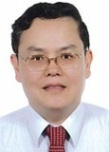
Shen Ming Chen
National Taipei University of Technology, Taiwan
Title: Eco-friendly syntheses of advanced carbon-based nanomaterials for electrochemical biosensors and energy storage applications
Biography
Biography: Shen Ming Chen
Abstract
The existing carbon materials can be classified into activated carbon (0-dimensional), carbon nanotubes (CNT) (1-dimensional), graphene (2-dimensional) and carbon foams (3-dimensional). Among these, graphene is well known to be the top candidate; However, preparation of graphene from graphite is an intricate procedure that can lead to an explosion during the oxidation of graphite. Similarly, the preparation of CNT also has some practical difficulties due to the complicated instrument setup. Fascinatingly, the preparation of ACs is simple, environmentally friendly and cost-effective. For the first time, activated carbon (ACs) with high surface area and volume has prepared by ZnCl2 activation at three different temperatures (700-900°C), using a simple and eco-friendly method. The morphology and chemical composition of the resultant ACs were characterized by field emission scanning electron microscopy, high-resolution transmission electron microscopy, elemental analysis, X-ray photoelectron spectroscopy and Raman spectroscopy. Here, we used the AC-700°C (AC) modified glassy carbon electrode (GCE) for the simultaneous and selective electrochemical detection of AA, DA and UA and dye-sensitized solar cell applications. Furthermore, a novel spherical carbon nanoparticle decorated activated carbon (SNAC) material with a high surface area of about 1555 m2g-1 is prepared from dead mango leaves by an eco-friendly method for the detection of toxic heavy metal ions and energy storage applications. The amounts of carbon, hydrogen, nitrogen and sulfur in SNAC are determined to be 72.6, 6.1, 6.5, and 7.46%, respectively. The limits of detection (LODs) for the determination of Cd(II), Pb(II), Cu(II), and Hg(II) ions at the SNAC-modified GCE are 24.4×10-9 M, 5.7×10-9 M, 23.2×10-9 M and 24.6×10-9 M, respectively. On the other hand, the maximum obtained specific capacitance is 478 F g-1 at a scan rate of 5 mV s-1. In addition, we prepared a novel nanocomposite viz. gold nanoparticles (Au) decorated activated carbon (SNAC) modified glassy carbon electrode by a simple electrochemical approach to trace level detection of hydrazine. The amounts of carbon, hydrogen, nitrogen and oxygen functional groups is a promising way to hold the Au nanoparticles in the carbon network. The electro-oxidation of hydrazine has been assessed by cyclic voltammetry, linear sweep voltammetry and amperometric sensor. Furthermore, the high-surface-area (~1456 m2 g-1) with highly porous and heteroatoms-enriched in nature of activated carbon (HAC) was prepared from the banana stem (Musa paradisiaca Family:Musaceae) at different carbonization temperatures of 700ºC, 800ºC and 900ºC. The HAC contains the amount of carbon, hydrogen, nitrogen and sulfur are determined to be 61.12, 2.567, 0.4315, and 0.349%, respectively. Moreover, we prepared a novel nanocomposite viz. nickel oxide (NiO) decorated activated carbon (HAC) modified glassy carbon electrode by a simple electrochemical approach for a novel non-enzymatic glucose sensor. The oxygen functional groups are a promising way to hold the NiO nanoparticles in the carbon network. The fabricated dye sensitized solar cells (DSSCs) with Pumpkin stem-AC counter electrodes shown the higher power conversion efficiency of 2.79%.
